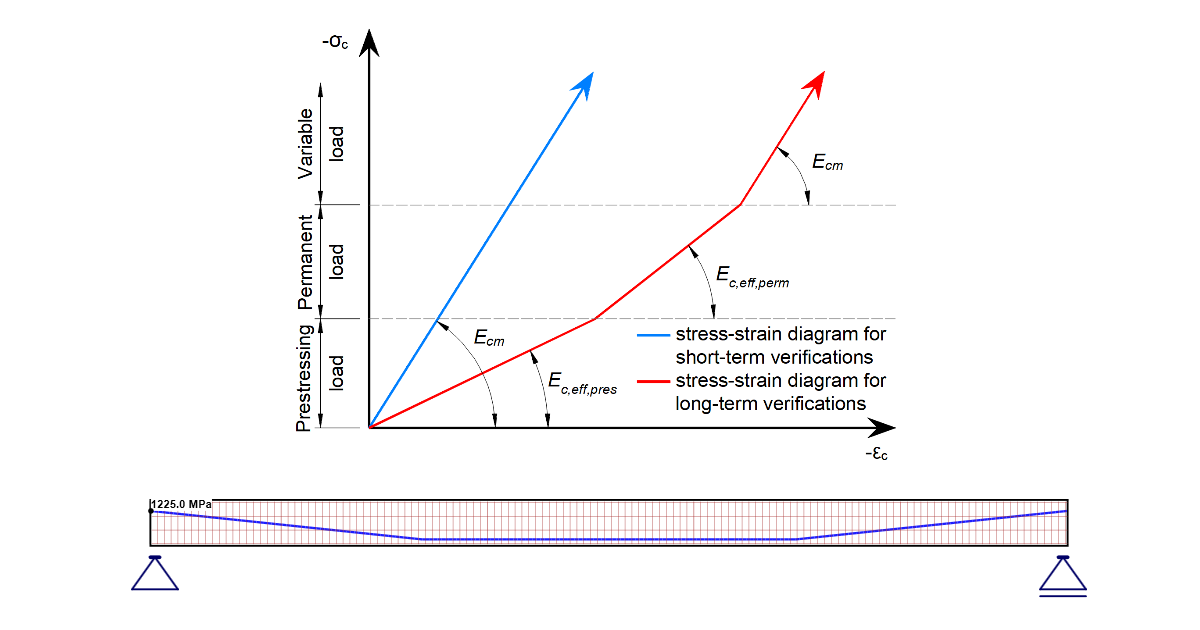Self-weight for prestressed members in Detail
Load cases are applied in 3 increments depending on the assigned Load type. In the graph below, you can see the stress-strain diagram used for SLS. Increments and changes in the modulus of elasticity are displayed.
- Prestressing Load type
- Permanent Load type
- Variable Load type
The example, one span post-tensioned beam, is created to show the difference between setting Self-Weight as Permanent Load Type or as Prestressing Load Type.
The short-term losses are set as User-defined. The value after short-term losses is 1225MPa. The long-term losses for SLS are set as 0%.
Self-weight is set as Permanent Load Type
In the first step of the calculation (in the first increment), the prestressing load type (P100%) is applied. Because we set the self-weight as the permanent type, only the prestressing is then applied. In the figure below, you can see the resultant stress (after short-term losses) in the tendon after the calculation.
The deformation in the Z direction is positive (no self-weight applied).
In the second step of the calculation (in the second increment), the permanent load type (G100%) containing self-weight is applied. The deformation of the beam will be as follows:
The stress in the tendon for the second increment is 1365 MPa. Which is 111% of the specified value. It is because the stress in the tendon is increased by the difference in the strain of the concrete fibres adjacent to the cable between the first and second steps of the calculation (additional stress caused by deflection of the beam).
How to avoid it? See below.
Self-weight is set as Prestressing Load Type
In the same case, only the self-weight is specified as the Prestressing load type.
In the first step of the calculation, the prestressing load type is applied. In this case, the self-weight and prestress are set as the prestressing load type. The stress in the cable is the specified 1225 MPa.
Since the self-weight is already defined in the first step of the calculation, the deformation of the beam will be the same in the first and second steps of the calculation. (No other long-term load is defined).
Conclusion
If the self-weight is specified in the Prestressing Load type, the tendon stress in the P100%+G100% state is equal to the set value. Other long-term loads can be included in the Permanent Load type that will be applied to the structure at a later date and can therefore affect the tendon stress.
It is possible to set different creep coefficients for the first and second calculation phases in the application. This means that it is possible to simulate the later time of application of other permanent loads.
Note that both Creep coefficients used in the example had a value of 2.5.
The differences in deformations in the second phase of the calculation are worth mentioning (-50.1 mm vs -58.3 mm). These values indicate a possible inaccuracy.
The recommended workflow is to always set Self-weight as Prestressing Load Type.










